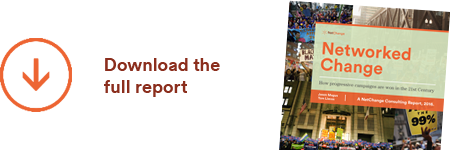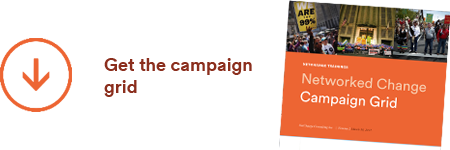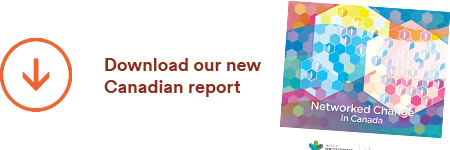Many clients are asking whether it still makes sense to have a blog in today’s busy world. Related questions about how to focus diffuse social media experiments, what the point of their website is, and whether they need to refresh their email newsletters all point to the lack of an up to date organizational content strategy. As most folks I work with are in the business of influencing decision makers, with important solutions, analysis, and commentary on the major issues of our times, the answer is clear: yes you need to do it all well!
But it’s smart to ask hard questions about whether our legacy publishing models are having impact anymore. If you’re just publishing to an audience of everyone without a clear message that consistently supports your core expertise, you’re probably wasting your time. Worse, if you’re not using the mediums that matter today, people with much less expertise than you, or even your opponents, are probably filling in the gaps.
Here are a some trends I’ve noticed on how to execute a modern content (also known as a thought leadership) strategy that will have impact:
Focus on the audiences you need to influence.
We live in the age of micro-targeting, and it’s not necessarily a bad thing. The public is probably not going to your nerdy issue oriented blog, and you’d be lucky if your supporters were also. But if you’re writing high quality content, the people who need to know about your solutions will, especially when you tell them what you wrote (see below). Write for them, and don’t worry about the rest.
Put your experts on the front lines.
One of the top trends I see today is figuring out how to unlock an institution’s top experts to speak freely, and directly, to their most important audiences via social media and blogs. Busy people tend to follow other people online, not institutions. Look at Anderson Cooper vs his CNN, Nick Kristoff vs his NYT, or Blake Hounsell vs his Foreign Policy Magazine. In the influentials game it’s not about raw numbers, it’s about who those readers/followers are, how relevant they are to your goals, and whether they pay attention to you. Make sure your best personalities have the support they need to grow their own following.
Social media is for polar bears and puppy dogs.
Social media is great for supporter relations, volunteer engagement, and maybe if you’re lucky some content sharing / meme spreading by your base. But other than a journalist or two on twitter, your most serious advocacy targets are not following your institution there. Be careful about the time you spend on institutional social media if your primary goal is to reach influentials. Spend as much or more time supporting your experts to grow much more powerful niche audiences.
It’s all about the push. And email still rules.
Everyone I know who is successful at influencing the public debate is aggressive with getting their content/reports/analysis to their advocacy targets, and email is still a great tool for this. But not boring, generic, every-issue-under-the-sun institutional newsletters. My smartest clients push specific blogs, news articles, reports, etc directly. The personal touch really does matter, and keeps you on your their radar as a helpful, useful expert on an issue they need to know about (even if they oppose it). Make sure they invest the extra time to do this harder but much higher impact work.
Social waves do impact influentials.
Everything above is about growing the profile of organizational experts. But let’s not forget we live in a world where we’re witnessing – not everywhere but regularly and extremely quickly – the erosion of the power of experts and elites. From the Arab Spring to Trayvon Martin, SOPA/PIPA to Susan B Komen, ALEC to the Tea Party, social waves powered by real people spontaneously acting together and showing their aggregate power online are shifting power and getting issues on the agenda. This is where the full, focused power of your institutions’ social media and email lists, when cautiously applied at the appropriate cultural/media moments, can help nudge obscure issues into wider circulation, making your behind the scenes expert work suddenly relevant.
The secret sauce in a modern thought leadership strategy seems to be shifting the orientation of what a traditional communications / digital shop can do (ie publishing and mass supporter engagement) with the communications role of the experts on the front lines (the content engines). Today’s crazy media landscape demands authenticity, real-time rapid response on issues, and analysis that adds value and doesn’t just repeat what everyone else says.
Shops that learn to ride this new dynamic and use the tools of our times to their fullest potential will be the ones that maintain relevance and successfully shape the debates and solutions of the future.










